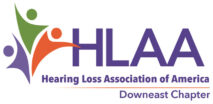WRITTEN BY
David Copithorne – From www.hearingtracker.com
Content Director, 16 February 2019
The World Health Organization (WHO) has decided that when it comes to loud headphones and hearing loss, enough is enough. Along with the International Telecommunication Union (ITU), it has published recommended specifications for a new generation of hi-fi headsets that won’t give you hearing loss.
The organizations say all new smartphones and audio players with in-ear or over-the-ear amplification should come with an array of new technologies. They are recommending adoption of a new technical standard specifying features such as software that monitors sound levels, automatic volume limitations, and data collection providing feedback on unsafe usage.
“Given that we have the technological know-how to prevent hearing loss, it should not be the case that so many young people continue to damage their hearing while listening to music,” said Dr. Tedros Adhanom Ghebreyesus, WHO Director-General. “They must understand that once they lose their hearing, it won’t come back.”
Half the world’s youth at risk of permanent hearing loss
WHO estimates that nearly 50% of people aged 12-35 years – or 1.1 billion young people – are at risk of hearing loss due to prolonged and excessive exposure to loud sounds, including music they listen to through personal audio devices. But it also says that half of all cases of hearing loss can be prevented through public health measures.
How? Simply by educating the public on what kinds of sound can damage your hearing. And how long one can be exposed to loud sounds before hearing is jeopardized.
Turning down the volume on your headphones below dangerous levels and limiting the time spent listening at high volumes can prevent hearing loss. But you have to know what those limits are. So the voluntary WHO-ITU standard specifies new technology that makes users aware of usage that can hurt your hearing.
Features of safe listening devices
The Safe Listening Devices and Systems standard recommends that personal audio devices include:
- “Sound allowance” function: software that tracks the level and duration of the user’s exposure to sound as a percentage used of a reference exposure.
- Personalized profile: an individualized listening profile, based on the user’s listening practices, which informs the user of how safely (or not) he or she has been listening and gives cues for action based on this information.
- Volume limiting options: options to limit the volume, including automatic volume reduction and parental volume control.
- General information: information and guidance to users on safe listening practices, both through personal audio devices and for other leisure activities.
The standard was introduced to coincide with World Hearing Day on March 3 and developed under WHO’s “Make Listening Safe” initiative. The initiative seeks to improve listening practices especially among young people, both when they are exposed to music and other sounds at noisy entertainment venues and as they listen to music through their personal audio devices.
Raising awareness among manufacturers and governments
Experts from WHO and ITU worked together over a two-year process to develop the standard, which draws on the latest research on noise-induced hearing loss and on extensive consultations with representatives from government, industry, consumers and civil society.
Adherence to the standard is voluntary, but WHO is providing a detailed implementation guide. The Safe Listening Devices and Systems Standard is detailed a 40-page book for manufacturers and other stakeholders. And for government and community organizations, WHO offers an implementation Toolkit for safe listening devices and systems.

